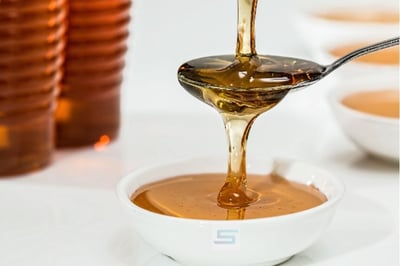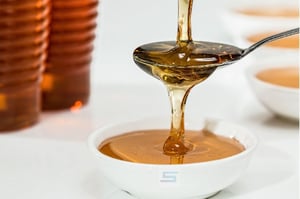Unlike height and weight, which people have a good sense about based on common items, viscosity is much harder to describe. Viscosity is one of the most important parameters in the development and modeling of applications that involve fluid flow, yet it is one of the most complex properties to full understand and even more complex to apply.
You can easily say that a 12 feet long sandwich is twice as long as 6 feet one, but may take a while to think what kind of fluid is twice as viscous as honey—not to say the preliminary question, what is the viscosity of honey?

Viscosity is defined as "resistance to flow" and is often referred to as the "thickness" of a fluid. To break viscosity down into simple examples think of water (a low viscosity fluid) and honey (a high viscosity fluid). This simple definition can be confusing when we start looking at fluids with different densities or measuring viscosity across a wide dynamic range .
At a molecular level, viscosity is the result the interaction between the different molecules in a fluid. This can be also understood as friction between the molecules in the fluid. Just like in the case of friction between moving solids, viscosity will determine the energy required to make a fluid flow.
In the table below, we have included some viscosity example of common fluids. This is far from a comprehensive list, but should be helpful to grasp some idea to start with.
| Approximate Viscosities of Common Materials (At Room Temperature-70°F) |
|
| Material | Viscosity, cP |
| Water | 1 cP |
| Milk | 1.5-3.5 Cp (fat free, 2% and whole milk) |
| Blood | 2.5-4 cP |
| Protein Therapeutics Samples | 2 cP-over 1,000 cP |
| Castrol Oil | 1,000 cps |
| Karo Syrup | 5,000 cps |
| Honey | 10,000 cps |
| Chocolate | 25,000 cps |
| Ketchup | 50,000 cps |
| Mustard | 70,000 cps |
| Sour Cream | 100,000 cps |
| Peanut Butter | 250,000 cps |
Now we know that the liquid chocolate is twice as viscous as honey—though this may vary based on brand and flavor.
Ready to dive a little deeper into viscosity measurements? Read more about how viscosity is measured, types of viscosity, or the many viscosity applications, or contact us to talk to one of our rheology experts!


